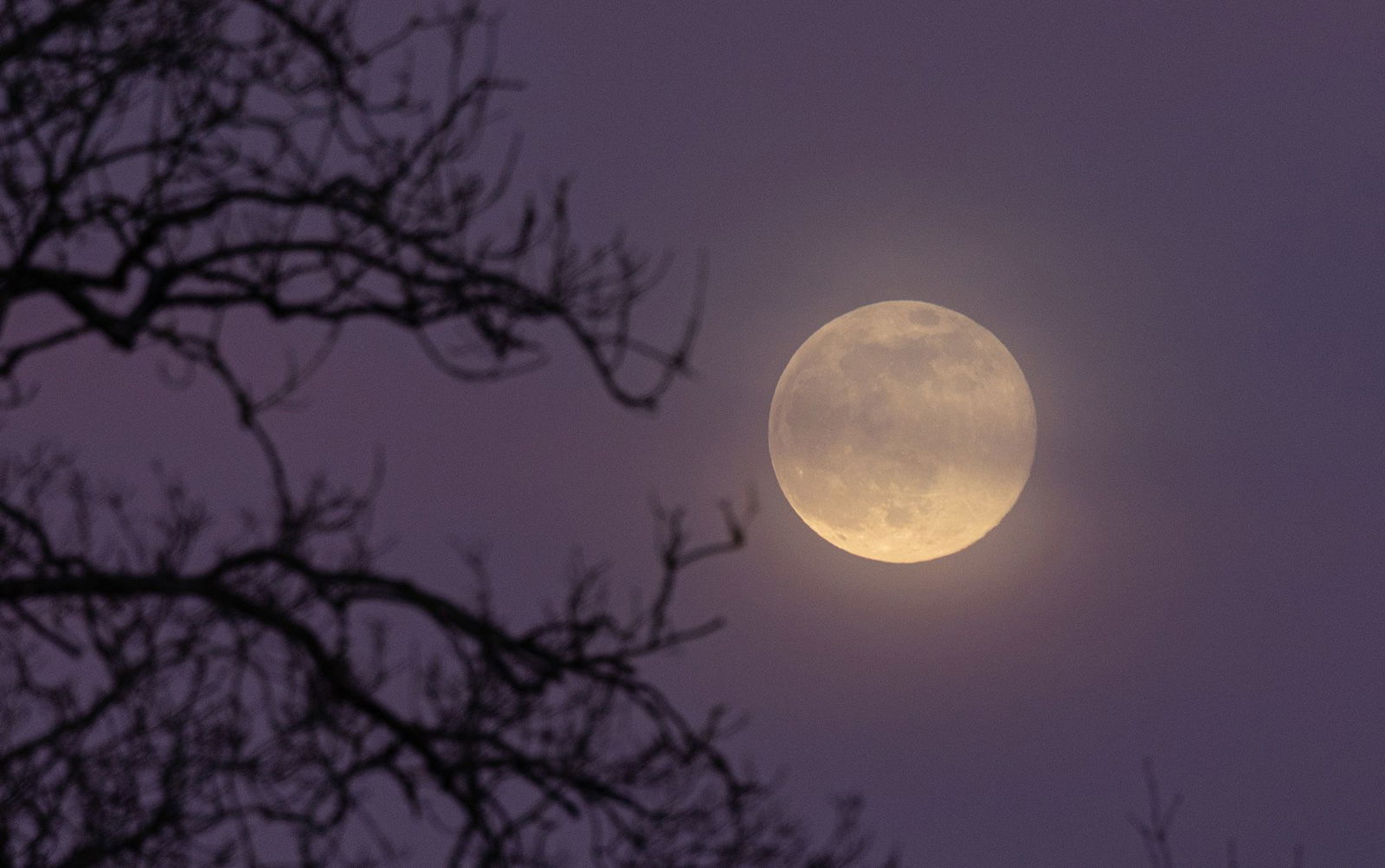April’s full moon is a ‘micromoon.’ Here’s what that means

April's full moon is a micromoon
By Kameryn Griesser and Ashley Strickland, CNN
(CNN) — Sharp-eyed lunar lovers may notice April’s full moon looks smaller than usual this month, and despite its “pink moon” namesake, the orb will have a white-golden hue.
The micromoon will be visible in the Northern and Southern hemispheres and is set to rise Saturday evening, reaching its peak at 8:22 p.m. ET.
Sky-gazers observe a micromoon as the celestial object is at or near the farthest point from Earth — also known as apogee — along its orbital path, according to NASA planetary scientist Dr. Noah Petro.
“The moon’s orbit around the Earth is not perfect; it’s elliptical, or egg shaped. So, there are points throughout the year when it’s closer to the Earth and points when it’s farther from the Earth,” said Petro, who leads the science team of NASA’s Artemis III mission, aimed at getting humans back on the moon for the first time since 1972.
April’s micromoon will be the smallest of the three micromoons in 2025, with the next one occurring in May, according to EarthSky.
For the best view of this micromoon, weather conditions allowing, NASA recommends using a pair of binoculars or a telescope and finding a spot with minimal light pollution.
Micromoon vs. supermoon
At its peak, April’s full moon will be about 30,000 miles (49,000 kilometers) farther from Earth than the largest supermoon of the year, which will rise in November, according to NASA.
A supermoon can be observed when the full moon occurs near or during perigee, the closest point in its orbit around Earth.
Petro said a micromoon can appear up to 14% smaller and about 30% dimmer than a supermoon, which is subtle enough to go unnoticed by the casual viewer. You can observe the difference, however, through photographs.
“What leads to the joy of looking at the moon is (that) it’s different every month,” Petro said. “We can test ourselves to see if we can actually observe these differences.”
This micromoon will appear about 6% smaller than the average full moon, according to astrophysicist Gianluca Masi, founder of the Virtual Telescope Project, which will stream the lunar event live as the moon rises over south central Italy.
Why is it called the ‘pink moon’ if it’s not pink?
The moon’s glowing appearance comes from the sun’s reflected light, leading to its typical white or golden hue, according to NASA.
Instead, the “pink” name is a nod to the arrival of blooming flowers at the beginning of spring. Specifically, the hot pink wildflower Phlox subulata, referred to as creeping phlox, moss phlox or moss pink, densely mats the slopes of eastern and central United States around the same time as April’s full moon, according to The Old Farmer’s Almanac.
Some Native American tribes have also named this moon after the arrival of spring foliage. The Tlingit described it as the budding moon of plants and shrubs, the Cherokee called it the flower moon, and the Apache referred to it as the moon of the big leaves, according to Western Washington University’s site.
This full moon also has religious significance in Christianity. The first full moon on or after the spring equinox, called the Paschal moon, sets the date of Easter.
Upcoming full moons
Following the pink moon event, there are eight more full moons to look out for this year, with supermoons occurring in October, November and December.
Here’s the list of full moons remaining in 2025, according to the Farmers’ Almanac:
- May 12: Flower moon
- June 11: Strawberry moon
- July 10: Buck moon
- August 9: Sturgeon moon
- September 7: Corn moon
- October 6: Harvest moon
- November 5: Beaver moon
- December 4: Cold moon
Meteor shower events
Meteor showers occur regularly throughout the year as Earth passes through the trails of debris left by comets.
Here are peak dates for upcoming meteor showers in 2025, according to the American Meteor Society and EarthSky.
- Lyrids: April 21–22
- Eta Aquariids: May 5–6
- Southern Delta Aquariids: July 29–30
- Alpha Capricornids: July 29–30
- Perseids: August 12–13
- Draconids: October 8–9
- Orionids: October 22–23
- Southern Taurids: November 3–4
- Northern Taurids: November 8–9
- Leonids: November 16–17
- Geminids: December 12–13
- Ursids: December 21–22
Lunar and solar eclipses in 2025
In the lead-up to the fall season, two eclipse events will grace the sky.
A total lunar eclipse will be most visible from Europe, Africa, Asia, Australia, parts of eastern South America, Alaska and Antarctica on September 7 and 8. A lunar eclipse, which causes the moon to look dark or dimmed, occurs when Earth is between the sun and moon and the three celestial objects line up in a row so that the moon passes into our planet’s shadow.
When the moon is within the darkest part of Earth’s shadow, called the umbra, it takes on a reddish hue, which has led to the nickname “blood moon” for a lunar eclipse, according to NASA. That shadow isn’t perfect, so sunbeams sneak around the shadow’s edges, bathing the moon in warm hues.
A partial solar eclipse will occur on September 21 as the moon moves between the sun and Earth but the celestial bodies aren’t perfectly aligned, according to NASA. In this type of event, the moon only blocks part of the sun’s face, creating a crescent shape in which it appears the moon is taking a “bite” out of the sun. This event will be visible to more remote areas of Australia, Antarctica and the Pacific Ocean.
The-CNN-Wire
™ & © 2025 Cable News Network, Inc., a Warner Bros. Discovery Company. All rights reserved.

